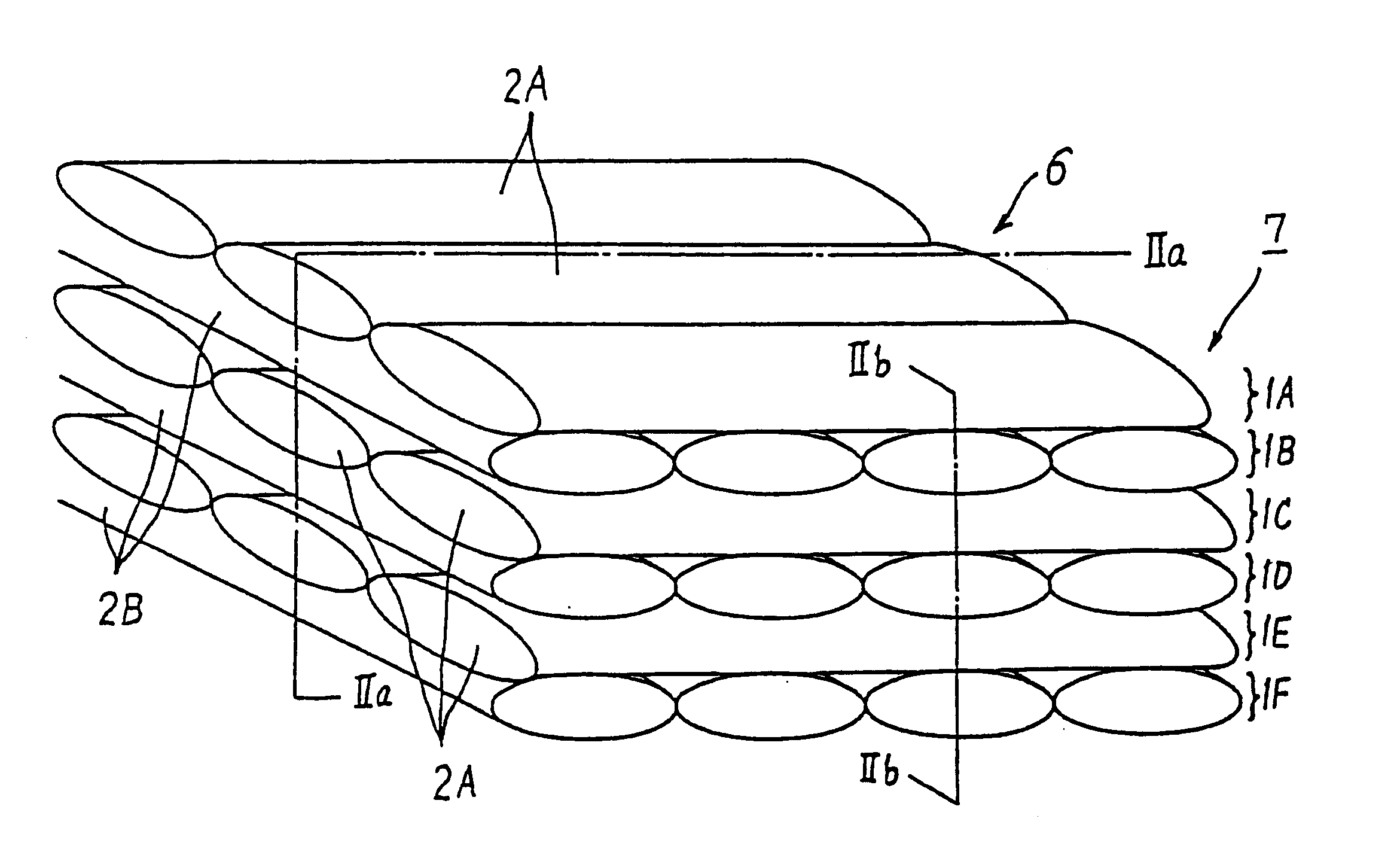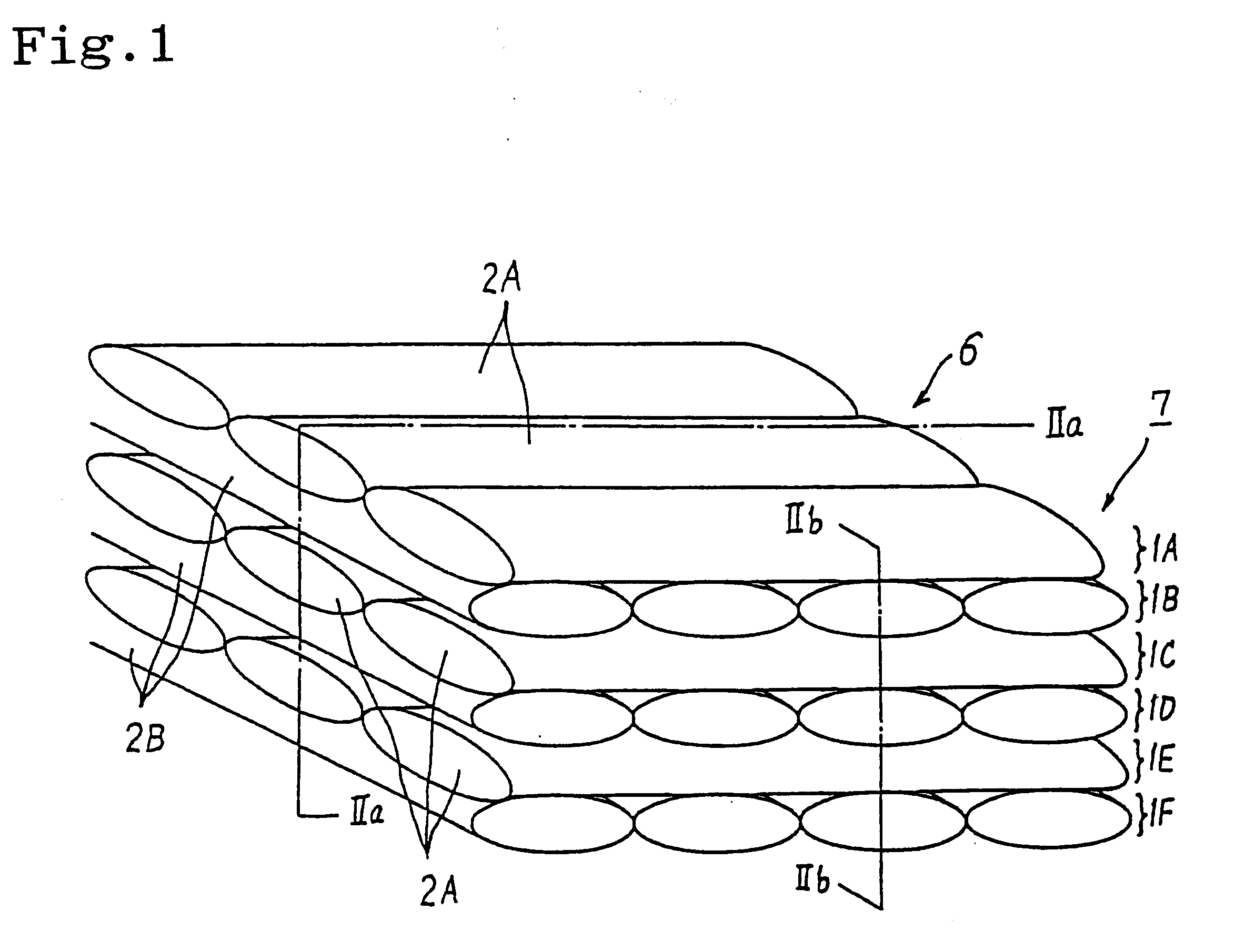Fiber-composite material and method for producing the same
a technology of fiber and composite materials, applied in the direction of friction lining, transportation and packaging, mechanical equipment, etc., can solve the problems of high energy consumption of driving materials, materials not necessarily the best sliding materials, and high densities of materials
- Summary
- Abstract
- Description
- Claims
- Application Information
AI Technical Summary
Problems solved by technology
Method used
Image
Examples
production examples
Prepreg sheets in which carbon fibers arranged in one direction were impregnated with phenol resin are subjected to a cross lamination, and the resin was hardened by a hot press at 180.degree. C. under 10 kg / cm.sup.2. Then, the laminated prepreg sheets were fired at 2000.degree. C. in nitrogen to obtain a C / C composite having a thickness of 10 mm. The obtained C / C composite had a density of 1.0 g / cm.sup.3 and an open porosity of 50 wt %.
Then, the obtained C / C composite was vertically placed in a carbon crucible filled with Si powder having a purity of 99.8% and an average diameter of 1 mm and having a volume sufficient for having a porosity of 5%. The carbon crucible was put in a furnace, and treated at 1300.degree. C. under 1 hPa with an argon gas flow of 20 NL / min. for 4 hours. Then, the temperature was raised up to 1600.degree. C. to impregnate the C / C composite with Si to obtain a fiber composite material having a porosity of 5%.
example 1
A sliding material was produced by the use of a composite material having a layer made of a Si--SiC-based material in the parent material of the C / C composite obtained in the above Example of production. The layer formed by impregnating the basic material with the Si--SiC material had a thickness of 50 .mu.m from the surface. Incidentally, the rate of Si impregnation was 40%.
A test piece was cut out of the part where the Si--SiC material is sufficiently compounded with the C / C composite near the surface layer of the composite material. The test piece was cut to have a size of 60 mm.times.60 mm.times.5 mm by the use of a grinding plate, and then subjected to finishing by a grinding stone of 800# to obtain a sliding material. The ground surface of the sliding material had a surface roughness of 1 .mu.m had a flatness (straightness) of 2 .mu.m. Table 1 shows results of measuring coefficient of kinetic friction, specific abrasive wear, oxidation resistance, interlaminar shear strength, ...
example 2
A sliding material was produced in the same manner as in Example 1 by the use of a fiber composite material produced in the same manner as in the Example of production except that the rate of Si impregnation was 45%. Table 1 shows results of measuring coefficient of kinetic friction, specific abrasive wear, oxidation resistance, interlaminar shear strength, compressive strength, bending modulus and the like of the sliding material. The coefficient of kinetic friction was measured in a direction parallel to the direction of lamination of the fibers.
PUM
| Property | Measurement | Unit |
|---|---|---|
| porosity | aaaaa | aaaaa |
| temperature | aaaaa | aaaaa |
| temperature | aaaaa | aaaaa |
Abstract
Description
Claims
Application Information
 Login to View More
Login to View More - R&D
- Intellectual Property
- Life Sciences
- Materials
- Tech Scout
- Unparalleled Data Quality
- Higher Quality Content
- 60% Fewer Hallucinations
Browse by: Latest US Patents, China's latest patents, Technical Efficacy Thesaurus, Application Domain, Technology Topic, Popular Technical Reports.
© 2025 PatSnap. All rights reserved.Legal|Privacy policy|Modern Slavery Act Transparency Statement|Sitemap|About US| Contact US: help@patsnap.com



